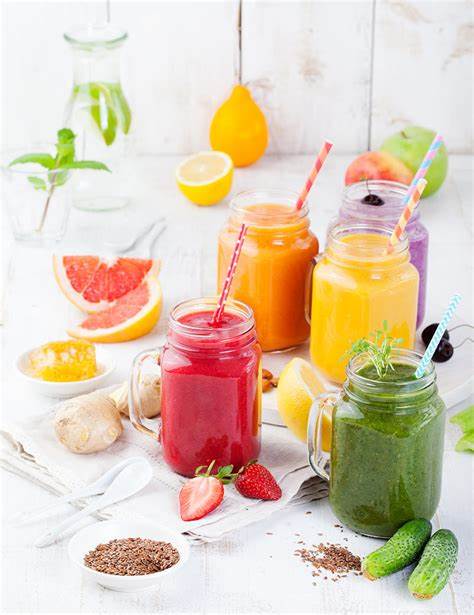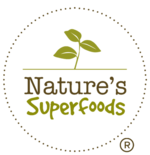-
No products in the cart.
Should you avoid smoothies and fruit juices?

Ever wondered whether drinking a smoothie or fresh fruit juice is as healthy as eating a piece of fruit? Ever questioned if you are getting the same amount of nutrients when drinking a glass of smoothie or juice you would typically get when eating whole fruit? As a nutritionist, these are questions I get asked frequently – and I feel that there are many myths and misunderstandings in this area as well. Also, answering these questions is not a simple one as there is no straightforward answer. Whether we should avoid it or not depends on many factors including the amount of actual fruit and vegetables added into the blend, the presence of added ingredients like sugar and preservatives, as well as the method of processing the beverage.
The Disadvantages and Benefits of Smoothies & Fruit Juices
The Pros
Today there are hundreds of recipes up on the internet. Colourful smoothies and fruit juices have been part of the trendy millennial culture as these have often been featured on social media platforms such as Instagram and food blogs. However, not all of these recipes for fruit juices and smoothies are healthy.
If home-made with natural, organic ingredients with no added sugars and preservatives, these smoothies and freshly pressed fruit juices are great for us. Not only are they delicious, but they are also packed with nutrients! Not enough time to sit yourself down and have a bowl of healthy breakfast cereal before leaving for work? Extremely convenient to consume, smoothies and juices are great to grab and go, making them perfect for our busy work lifestyles.
These smoothies and fruit juices are not just about fruits. It is a great way to integrate raw vegetables like carrots and spinach into your diet. When you throw in superfood powders and other grains and seeds, you can get an added boost too. Throw in flax, hemp, or organic chia seeds for omega-3-fatty acids, Moringa Leaf for calcium or even plant-based protein powders for its protein.
Smoothies and fresh fruit juices are also a much healthier option than sodas and sugar-sweetened beverages due to the added sugars and preservatives found in these processed drinks. Moreover, consuming smoothies and fruit juices is a convenient way of meeting the 2+2 servings recommended by the Health Promotion Board in Singapore, especially if your diet is lacking in whole fruits and vegetables.
The Cons
A recent study by the Harvard School of Public Health highlighted that consuming whole fruits is linked with a significantly lower risk of Type 2 Diabetes. On the other hand, the consumption of fruit juice is linked with a higher risk. This demonstrated the drastic difference between consuming a whole fruit versus drinking fruit juices. Why is this so? This is because the sugar found in fruit juice is mainly fructose, which is metabolised primarily in the liver. When there is excessive fructose to be digested, some of it gets turned into fat, contributing to fat build-up in the liver (non-alcoholic fatty liver) and insulin resistance.
Hence, even though home-made fruit juices are a great source of nutrients, with their concentration of sugars, it is still not the best option compared to consuming a whole fruit, raw vegetables, or a fibre-rich smoothie. Also, when juicing, lots of the fruit’s fibre content gets filtered away. The lack of fibre also applies to store-bought fruit juices. Not only are the store-bought mass-marketed packaged juices often loaded with added sugars and artificial flavouring to make them more appealing in terms of taste to consumers, but they are also filled with preservatives to lengthen their shelf life. It is thus easy to consume massive amounts of sugar with these types of fruit juice.
The Importance of Fibre
The presence of fibre in fruits is important to slow the digestion of fruit sugars in our bodies. Without fibre, the sugars found in fresh fruit juice will drive up our blood sugar levels rapidly.
Fibre is not only a bulking agent which aids in bowel movement. Research has also shown that fibre is digested by our gut bacteria to form short-chain fatty acids (SCFAs) which have many health-promoting effects. This includes inhibiting the growth of bad bacteria and increasing mineral absorption in our bodies. The good bacteria use fibre to maintain normal bowel structure and function, prevent or alleviate diarrhea, stimulate colonic blood flow up, and increase fluid and electrolyte uptake. Good bacteria also make Butyrate from fibre which is the major fuel for the cells that line our colon.
Now you may be asking yourself why the juice industry can’t just add some fibre back to the juice if the only difference between consuming fresh fruits and drinking fruit juices is the presence of fibre. In essence, juicing extracts all the vitamins, nutrients, and water from the ingredients so that your body absorbs them easily – a quick-fix for those for a instant results. However, in this process, insoluble fibre is also removed – all the nutrients that are bound to fibre are lost as a result.
Smoothies, on the other hand, use the whole fruit or vegetable, instead of just extracting the juice. The fibre is still there in the smoothie, slowing the digestion of sugar in the body. Smoothies also provide concentrated amounts of nutrients compared to eating a whole fruit.
Main Takeaway
Nowadays, many people are following fad diet trends set by celebrities and influencers and one of them is the juice fast. Heather Sylvester, a registered dietitian at Kennedy Hospital in Cherry Hill, N.J., mentioned to USA Today, that people with Diabetes risk suffer serious consequences from a juice fast. She explained that for diabetics, juice fasts result in a spike in blood glucose levels.
In conclusion, it is best to consume whole fruits and vegetables or smoothies (if you are looking to pack in a variety of nutrients in 1 serving). However, if you choose to drink smoothies or fruit juices, avoid store-bought beverages with added sugars. Instead, look up healthy recipes for fruit juices and smoothies and make your own at home. Do it right by using green alkalising vegetables and fruits with lower sugar content, such as berries and avocados. If you are making a smoothie, remember to keep the fruits to just one cup and increase the amount of green vegetables used. We also recommend mixing in 1-2 teaspoons of organic superfood powders like Moringa Leaf, Acai Berry, or Maqui Berry into your smoothie for added amounts of antioxidants to ensure you get a variety of nutrients. For a little protein kick, add in a scoop or two of a plant-based protein powder and Camu Camu berry powder for a healthy dose of Vitamin C.
References:

